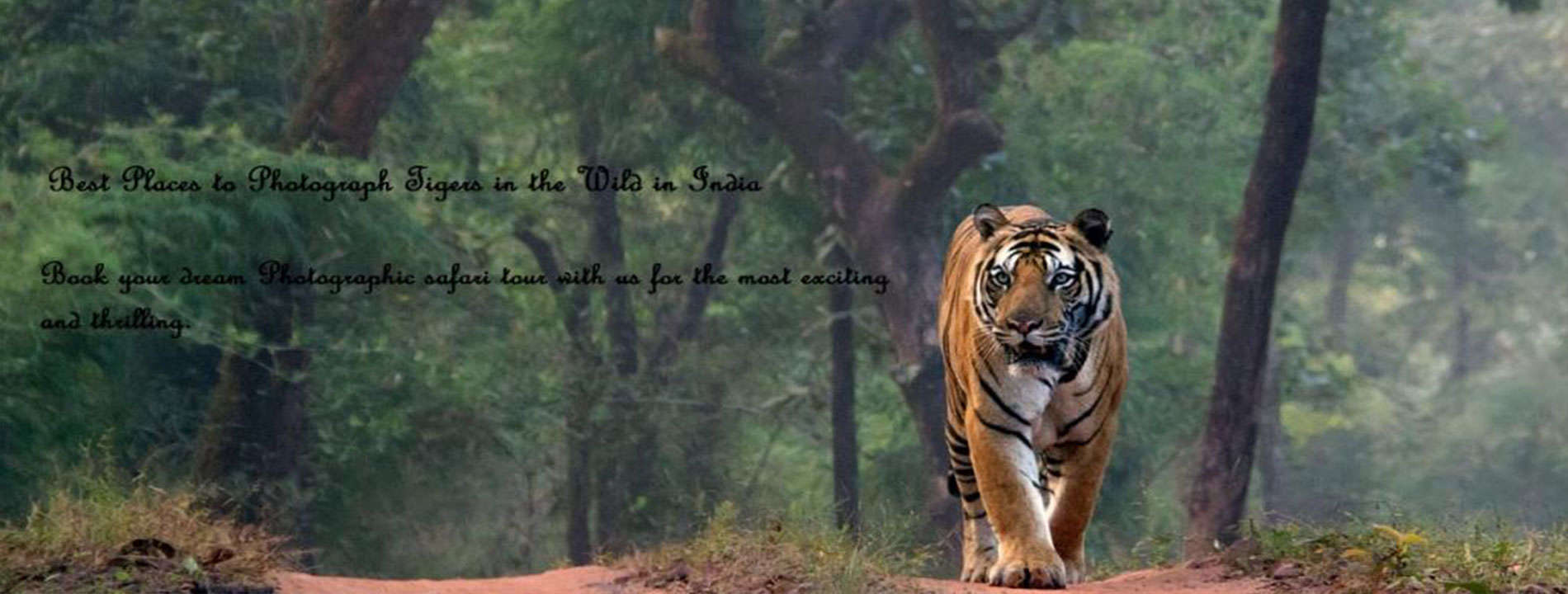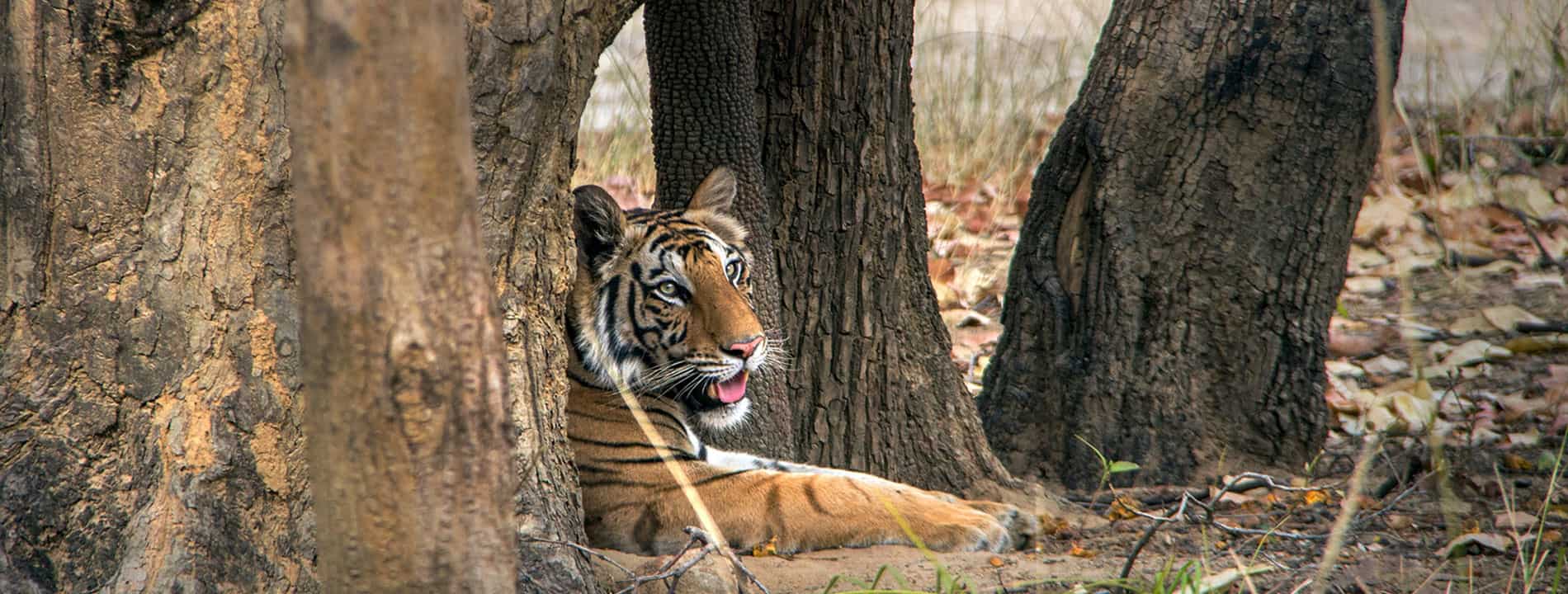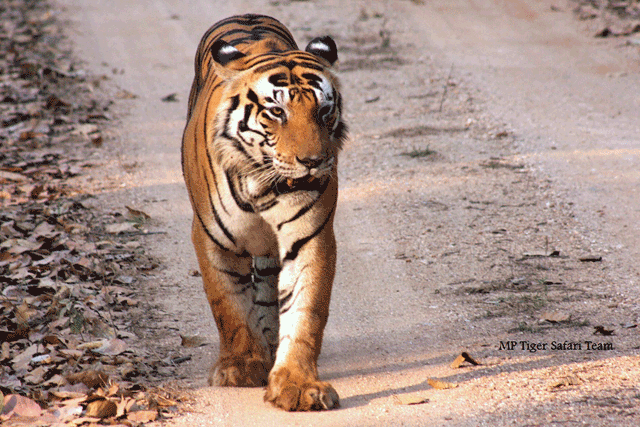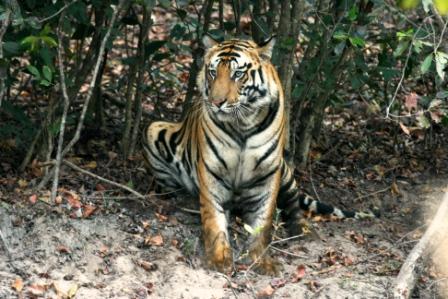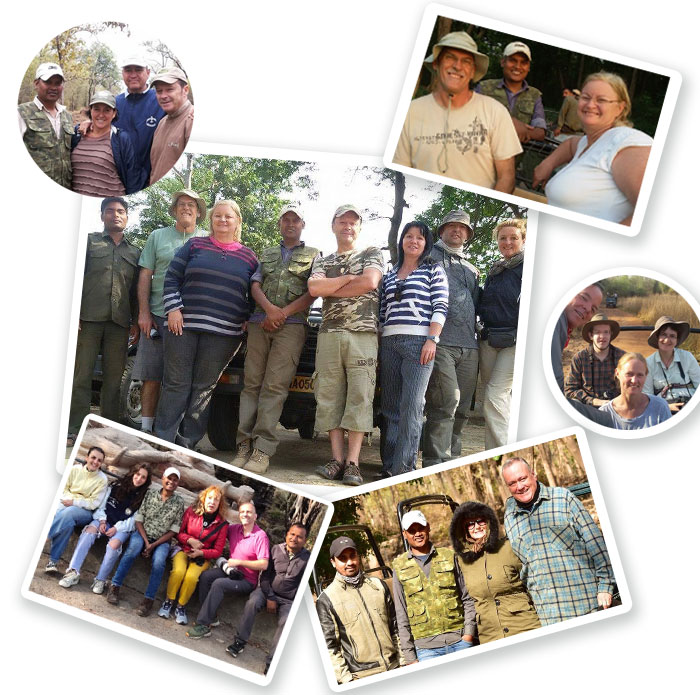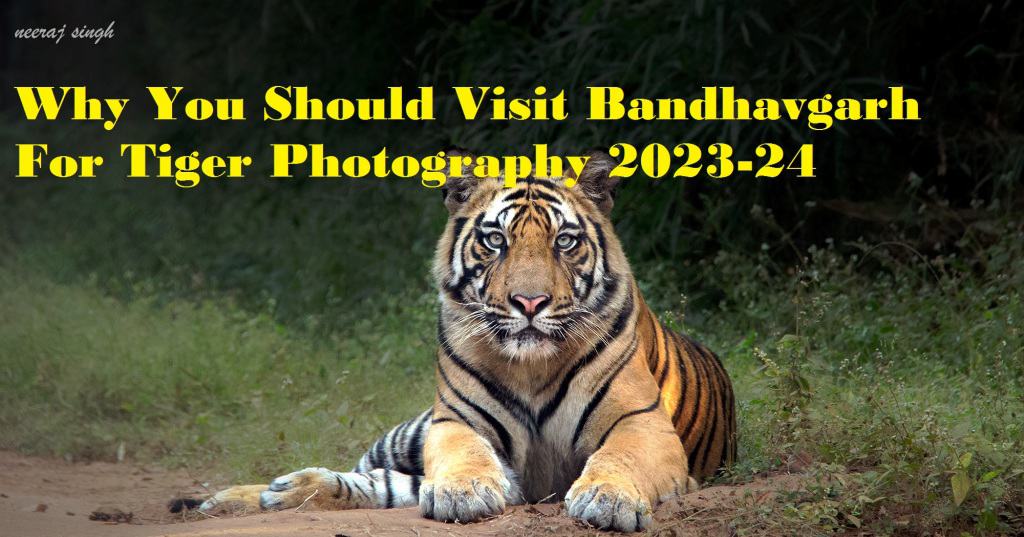The historical Bandhavgarh National Park is home of vast variety of mammals and reptiles. It is because of its diverse fauna that the park is so famous. But the tigers rule the roost here. They are frequently sighted by the tourists on the jeep safari and elephants. Because of some inaccessible terrain and excellent conservation work breeding has been very successful. Today Bandhavgarh is the best place in the wild to see the tiger. The high density of tigers in this preserve is suggestive of excellent habitat and abundant prey base. Some of the tigers in the park have made it into history books. Sita was well known for being a prolific breeder while Charger was known for its aggression.
| Animal List in Bandhavgarh | ||||||||||||||||||||||||||||||||||||||||||||||||||||||||||||||||||||||||||||||||||||||||||||||||||||||||||||||||||||||||||||||||||||||||||||||||||||||||||||||||||||||||||||||||||||||||||||||||||||||||||||||||||||||||||||||||||||||||||||||||||||||||||||||||||||||||||||||||||||||||||||||||||||||||||||||||||||||||||||||||||||||||||||||||||||||||||||||||||||||||||||||||||||||||||||||||||||||
| Bandhavgarh Tiger Reserve is a prime tiger habitat. It is home to Central Indian fauna with more than 22 species of mammals. Hanuman langur and rhesus macaque represent the primate group. Among the carnivore species tiger, leopard, wolf, jackal, fox, ratel, gray and ruddy mongoose, striped hyena, wild dog and jungle cat have been notified. Ungulates include barking deer, four horned deer, spotted deer, sambhar, chinkara, nilgai and wild boar. Porcupine, flying squirrel, lesser bandicoot rat and three-striped palm squirrel belong to Family Rodentia. The nocturnal animals and birds are the night jars, owls Eurasian thick knee, small Indian civet and toddy cat and Rufus-tailed. The wild dog, Bengal fox, sloth bear, leopard and tiger found in Bandhavgarh are endangered animals. Mammals List Tiger Safari Bandhavgarh | ||||||||||||||||||||||||||||||||||||||||||||||||||||||||||||||||||||||||||||||||||||||||||||||||||||||||||||||||||||||||||||||||||||||||||||||||||||||||||||||||||||||||||||||||||||||||||||||||||||||||||||||||||||||||||||||||||||||||||||||||||||||||||||||||||||||||||||||||||||||||||||||||||||||||||||||||||||||||||||||||||||||||||||||||||||||||||||||||||||||||||||||||||||||||||||||||||||||
|
||||||||||||||||||||||||||||||||||||||||||||||||||||||||||||||||||||||||||||||||||||||||||||||||||||||||||||||||||||||||||||||||||||||||||||||||||||||||||||||||||||||||||||||||||||||||||||||||||||||||||||||||||||||||||||||||||||||||||||||||||||||||||||||||||||||||||||||||||||||||||||||||||||||||||||||||||||||||||||||||||||||||||||||||||||||||||||||||||||||||||||||||||||||||||||||||||||||
Tiger
The historical Bandhavgarh National Park is home of vast variety of mammals and reptiles. It is because of its diverse fauna that the park is so famous. But the tigers rule the roost here. They are frequently sighted by the tourists on the jeep safari and elephants. Because of some inaccessible terrain and excellent conservation work breeding has been very successful. Today Bandhavgarh is the best place in the wild to see the tiger. The high density of tigers in this preserve is suggestive of excellent habitat and abundant prey base. Some of the tigers in the park have made it into history books. Sita was well known for being a prolific breeder while Charger was known for its aggression.
During the passage of time impressive male tigers have habituated the preserve. Besides the tiger one can see the elusive leopard, sloth bear, wild dogs, bison, sambar, blue bull, barking deer, spotted deer, chausingha, Hanuman langur, wild boar, rhesus macaque, civet cats, jungle cats, pangolin, porcupine, fox and jackal. The status of Hyena and Indian wolf is not known and they are a rare sight.
It takes a long stay in order to see a large number of mammals and other animals of this little kingdom. But for tigers and other common animals a three night stay is enough. The number of reptiles found here is impressive but most of them are nocturnal and seasonal hence rarely seen.
Leopard
LeopardThe elusive panther survives in impressive numbers in the park. Because of competition and deadly rivalry it keeps its movement away from its rival the Bengal Tiger. Hence leopards have a transitory existence in the core area and they roam mostly in the buffer zone near human habitation. It is smaller than the its cousin but very popular. The animal is mostly arboreal, this feature acts as some kind of spacing mechanism from its larger cousin. The prey base is spotted deer, barking deer, chinkara, wild boar, langur and live stock.
Chital
Chital Also known as the Axis deer chital and spotted deer this animal is the most important element of the ecosystem. It is the main prey base of the carnivore especially the tertiary carnivore. The average weight of a male is ninety kg and ot stands more than three feet. It is purely herbivorous and survives on wide variety of floral elements. Being a prolific breeder it inhabits the forests in large numbers hence offering survival benefits to the big cats and other carnivores. The animal sheds its antlers during the monsoon after the mating is over. The fawns are delivered during winters normally one of or two. This deer can breed again immediately after the loss of the young one ensuring its numbers.
Sambar Deer
SambharSambar is Asia’s largest deer and weighs 225-320 kg with a shoulder height of 150 cm. It is strictly limited to dense canopy and grasslands and loves to wallow. Along with the Axis deer it is the main prey base of tigers. This deer species cast their antlers during March April which re grow during the rainy season and are ready for some territorial battles with rivals. Most of the mating takes place during the winters but may differ form region to region. The animal is a coarse feeder but also eats grass of various species.
Barking Deer
Barking deer Smaller in size this deer is often seen the the reserve especially near the water hole. It has a unique alarm call which resembles a dog hence so named. It inhabits both the dense canopy and outer areas of the forest and is rarely seen in the grassland. Being a shy animal long sightings rarely happen on slight disturbance it dashes into the ground story and thickets never to be seen again. Like all deer species only the males have horns that emerge from the brows. The animal is example of the charismatic creation of the nature.
Nilgai, Chausingha and Chinkara
Chinkara Blue Bull: The bull ways around three hundreds kilos and is ashy blue in color hence the name in Hindi it is called the Nilgai. The animals is part of antelope family and the female is smaller and fawn colored with white stockings. The Nigali prefers open areas with lot of scrub however it is often found in dense forests and wetlands. Chausingha also called four-horned deer is the only one with four horns, the female does not have horns. It is shy rare and loves mountain slopes a goat like creature it is confined to bushes where it consumes herbs and shrubs. Chinkara (Indian gazelle) is an antelope with spiral horns. The only gazelle in India it is found in Bandhavgarh, mostly in open areas. The species is becoming threatened and like the chuasingha it is less seen in Central India.
Dog
Dog Wild Dog is also known as dhole in Central India it is a majestic animal and a pack hunter. Paradoxically the wild dog does not bark but communicates with whistles. The dhole is a light but sturdy animal and is known to consume its prey on chase while it is still alive.
Sloth Bear
Sloth bear Melursus Ursinus so named for its disheveled appearance. The sloth bear is apart of the ecosystem being an omnivorous animal but major part of its diet is vegetation it consumes carrion as well. The sloth bear keeps to dense canopy and is much smaller than its arctic cousins. It is very fond of mahua fruits and as well as honey.
Wild Boar
The original stock of Guar was wiped put due to rinderpest and FPL. No care was taken to immunize the live stock in the periphery that are the carrier of these diseases. Some Guar have been introduced from Kanha National Park. The bovid is a coarse grazer and hill animal it descends to the plains in summer to feed on grass and seek water. A male bull stands up to six feet in height and can weigh up to one ton. Females are relatively smaller and live in herds consisting of females, sub adult males and cubs. The herd size can be up to forty heads. Males mingle with the herd during the mating season in winter else they live a solitary life or groups of two or three.
Common Langur
The Hanuman Langur is a common animal in Indian forests as well rural and urban areas where it is a menace. The primate is both arboreal and ground feeding. It is a gregarious animal and is one of the main prey base of forest ecosystems. It is easily seen the the park in groups along with the spotted deer. It is one of main seed dispersal agent as well. Both the leopard and the tiger prey on this monkey.


